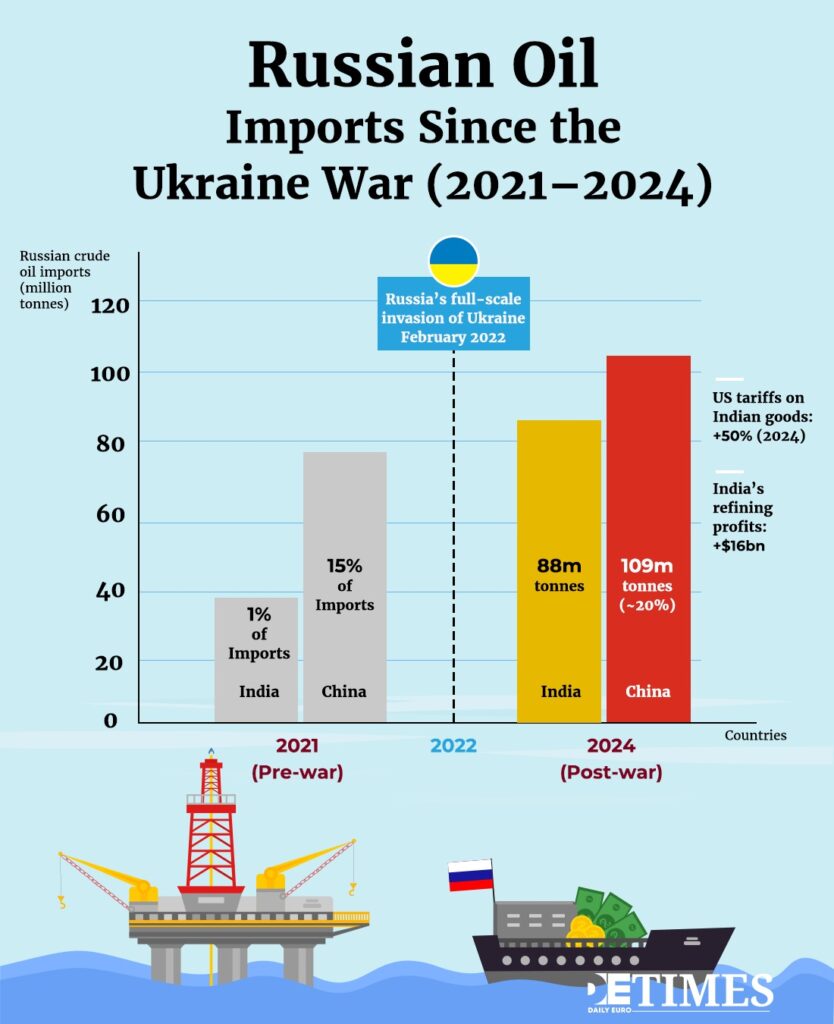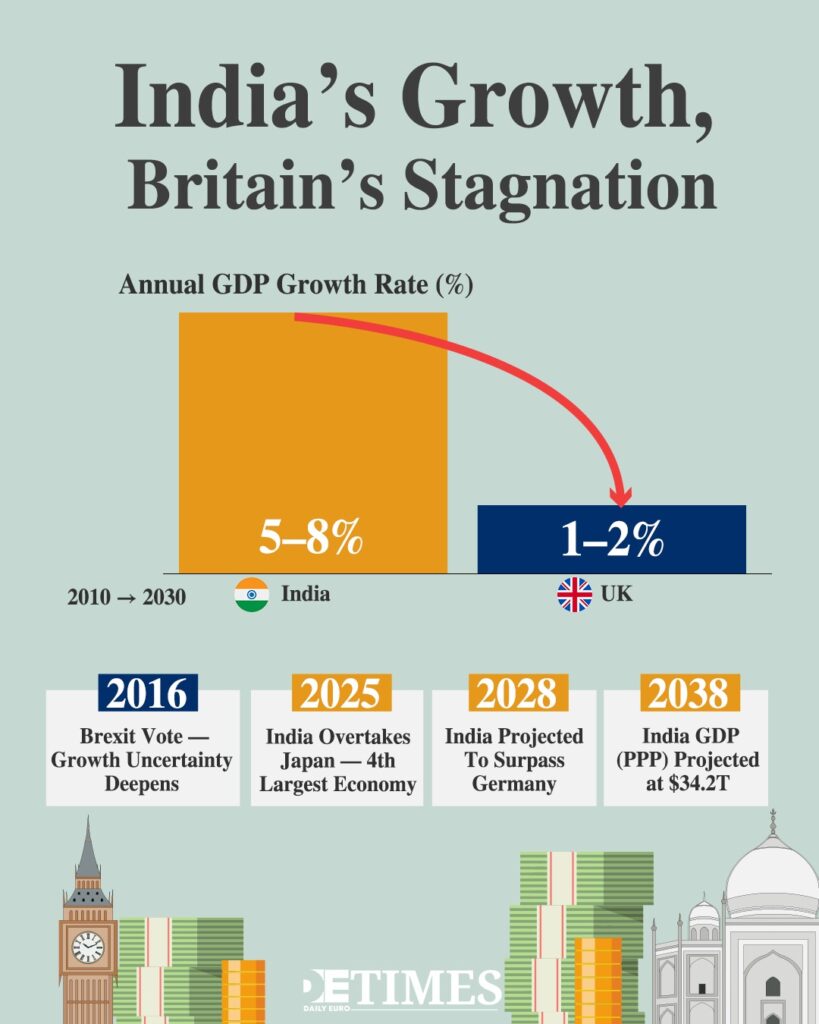Keir Starmer arrived in Mumbai this week with 125 business leaders, aiming to sell India lightweight missiles made in Belfast.
While the £350 million weapons deal sounds significant, Britain has also promised an additional £250 million in a second phase.
Behind this transactional relationship is a hard truth: Britain now sells weapons to India because it can no longer trade anything more important.
The Economics Show a Different Reality
India passed Japan this year as the world’s fourth-largest economy. The International Monetary Fund forecasts India’s nominal GDP at $4.19 trillion, slightly higher than Japan’s $4.18 trillion.
By 2028, India is expected to pass Germany and become the third-largest economy. S&P Global predicts annual growth of 6.7 percent through 2030-31.
Britain, which once built an empire based on India, now tries to sell missiles to its former colony.
Different Treatment Due to Oil
India’s growth happened despite US pressure. Donald Trump imposed extra tariffs in August, raising duties on Indian goods to 50 percent.
This was because India imported 88 million tonnes of Russian oil in 2024, up from less than 1 percent before the Ukraine war.
U.S. Treasury Secretary Scott Bessent accused India of “profiteering” by buying cheap Russian oil and reselling refined products, claiming it made $16 billion in extra profits.
China imported even more Russian oil – 109 million tonnes, about 20 percent of its energy imports – but Trump has not punished China similarly. Vice President JD Vance admitted the situation with China is complicated due to wider issues.
The difference is clear: powerful countries get leniency; India gets criticism.

Growth with Uncertainties
Economists warn against comparing India directly to China because their political systems, societies, and industrial paths are very different. China built manufacturing through decades of state control.
India’s government projects GDP growth between 6.3 and 6.8 percent for 2025-26. EY Research says India could become the world’s second-largest economy by 2038 with $34.2 trillion GDP, based on purchasing power parity.
These numbers assume stable global trade and no increase in U.S. tariffs.
EY estimates US tariffs could affect nearly 0.9 percent of India’s GDP, but with countermeasures the impact could be limited to 0.1 percentage points.
Despite the numbers, economic forecasts often fail when politics become volatile.
Britain’s Reduced Influence
Starmer completed the trade agreement with Narendra Modi in July after three years of talks, promising “huge benefits” like higher wages and lower prices.
Trade deals always promise benefits but rarely serve both sides equally. Britain depends on India more than India depends on Britain.
The arms deal shows this imbalance. Britain, which once ruled India, now sells missiles and hopes for market access.
Starmer called his visit a chance to “double down on the trade deal” to boost growth and jobs, talking about “a new, modern partnership.”
But this language hides the truth: Britain seeks partnerships because it has lost the power to impose them. “Global Britain” is mainly a slogan today.

Power Belongs to Producers
India’s rise is based on making things. It manufactures, refines oil, develops technology, and exports services, building wealth without Western approval.
Britain’s economy relies more on financial services and intellectual property, which do well when capital moves freely but suffer amid trade wars and sanctions.
Military sales remain one of the few areas where Britain holds a technological edge, but competition from France, Russia, and Israel is strong.
While £350 million sounds large, compared to Britain’s GDP it is a small amount – this is Britain’s influence after empire.
A Different Path
India’s development is not like China’s. China used a strong state control to guide industry, while India’s system involves multiple political parties competing in regular elections, with decentralised decision-making and broader public involvement.
These differences mean India won’t simply copy China’s manufacturing strength. Comparing them often causes confusion.
Britain understands this well. It gained wealth through industry, then shifted to finance, and now sells weapons to countries that still produce goods.
Britain once used military force to open Asian markets. Now it pushes for fast trade deal implementation and hopes India buys British missiles.
Keep up with Daily Euro Times for more updates!
Read also:
A Match to a Flame: Reform UK and Immigration
Relations in the Rear View For Now: The U.S.-India Diplomatic Crisis
An Imperial Dichotomy: Europe to Choose U.S. or India






